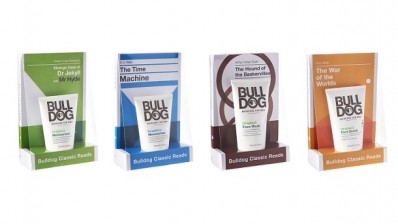Gifting part II: Why developing a sophisticated marketing strategy is vital

The white paper’s key findings show that family are the most common giftees, with 98% of HNWIs sending gifts to their family members.
HNWIs also commonly give gifts to themselves, with 67% of those surveyed doing so in 2016. Self-gifting, which is especially popular amongst females (74%) ties into Chinese community values that emphasise the importance of "little but certain happiness", "a sense of ceremony", and the concept of "love and pamper myself". These emotional drives serve to help brands better understand consumer loyalty to certain labels through feeling joy and satisfaction.
Product, brand and price
HNWIs will always consider a product or service, its brand and the price when making a purchase decision. In terms of selecting a product, "good quality and craftsmanship" (87%), "practicality" (85%), "uniqueness" (77%) and "attractive packaging" (74%) are thought to be the most important factors.
Valuing a brand is based on weighing up how "high-end, to gain face" (90%) it is, how "well-known" it is (83%) and "whether the brand fits with giftees’ self-image" (80%).
In terms of considering the attached price, HNWI consumers will look at whether the "price meets giftees’ expectations" (61%), as this will be the main factor in determining whether they make the purchase or not.
Demographic variation
Females are more likely to gift personal care devices, while young people under the age of 35 years old are likely to purchase diverse trending items including skin care, perfume, cosmetics and Spa beauty gifts.
Females "enjoy the process" and so more attention should be spent on building engagement with this demographic. On the other hand, males “take shortcuts” and therefore, brands need to help improve the experience by upping its efficiency.
Healthy focus
The report found that HNWIs focus on managing their health, with nearly 90% of respondents stating that 'health care products' are the most popular gifts bought. The luxury market is also growing, as 60% of respondents stated they are sending luxury items as gifts more frequently compared with previously over the last three years.
To leverage the popularity of gifting to boost brand awareness and sales, companies need to be aware of the obstacles relating to giving gifts, which include being "unclear about giftees' needs or preferences" (57%), the amount of "time and effort spent on selecting gifts" (50%) and "giftees [being] hard to impress" (49%).
Channel utilisation
Brands need to also utilise purchasing channels effectively by providing a first-class shopping experience that reflects buying preferences. In terms of domestic purchasing channels, 97% of HNWIs have brought gifts in brick-and-mortar shops including "domestic brand stores, counters" (76%), "domestic department stores, shopping centres" (68%) and "through friends" (58%). Of those asked, 74% of HNWIs have also purchased gifts overseas, while 69% of HNWIs have shopped for gifts online.
“This report's point of view is rooted in a profound understanding of Chinese culture and social background, and we analyse how these impact consumers' gifting needs and behaviour...we identified what really matters to HNWIs in terms of gifting at the critical stages of their decision-making journey,” said Gordon Domlija, CEO of MEC.



![Latest developments from the South Korean beauty market. [Getty Images]](/var/wrbm_gb_food_pharma/storage/images/_aliases/wrbm_tiny/publications/cosmetics/cosmeticsdesign-asia.com/headlines/brand-innovation/korea-focus-able-c-c-kolmar-and-more-in-this-k-beauty-round-up/17357973-1-eng-GB/Korea-focus-Able-C-C-Kolmar-and-more-in-this-K-beauty-round-up.jpg)

![Able C&C has furthered its partnership with Japanese discount chain Daiso with new makeup launch. [A'pieu]](/var/wrbm_gb_food_pharma/storage/images/_aliases/wrbm_tiny/publications/cosmetics/cosmeticsdesign-asia.com/headlines/brand-innovation/a-pieu-and-daiso-launch-exclusive-2-makeup-line/17339117-1-eng-GB/A-pieu-and-Daiso-launch-exclusive-2-makeup-line.jpg)
![Down Under Enterprises is setting sights on the Asian market as environmental sustainability and traceability become increasingly important. [Getty Images]](/var/wrbm_gb_food_pharma/storage/images/_aliases/wrbm_tiny/publications/cosmetics/cosmeticsdesign-asia.com/headlines/market-trends/down-under-enterprises-shifts-focus-to-china-as-environmental-sustainability-traceability-come-into-the-spotlight/17304932-1-eng-GB/Down-Under-Enterprises-shifts-focus-to-China-as-environmental-sustainability-traceability-come-into-the-spotlight.jpg)
![News updates from Shiseido, Dr.Ci:Labo, Sephora, and more. [Shiseido]](/var/wrbm_gb_food_pharma/storage/images/_aliases/wrbm_tiny/publications/cosmetics/cosmeticsdesign-asia.com/headlines/brand-innovation/updates-from-shiseido-dr.ci-labo-sephora-and-more/17334944-1-eng-GB/Updates-from-Shiseido-Dr.Ci-Labo-Sephora-and-more.jpg)

![Clariant has underscored the importance of localisation strategies and distribution capabilities in China with beauty trends evolving at a rapid pace. [Getty Images]](/var/wrbm_gb_food_pharma/storage/images/_aliases/wrbm_tiny/publications/cosmetics/cosmeticsdesign-asia.com/article/2024/04/16/clariant-emphasises-importance-of-localisation-in-the-era-of-viral-trends/17327969-1-eng-GB/Clariant-emphasises-importance-of-localisation-in-the-era-of-viral-trends.jpg)
